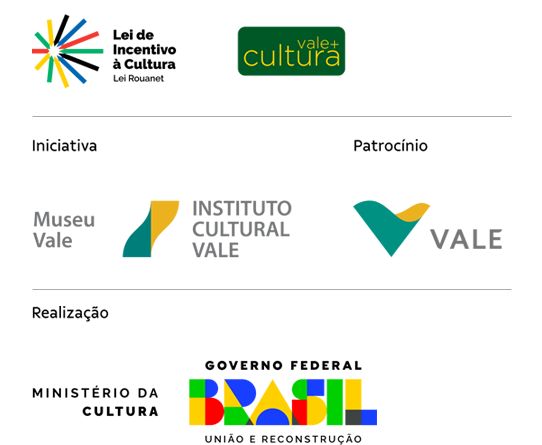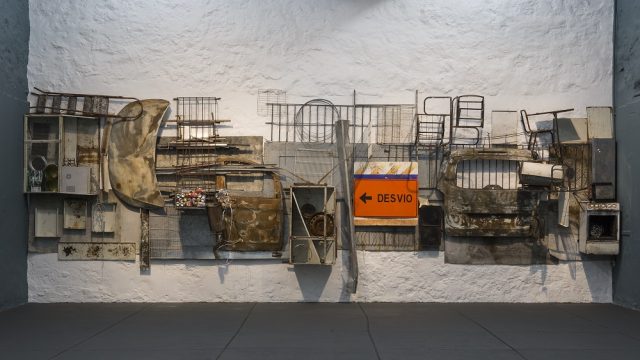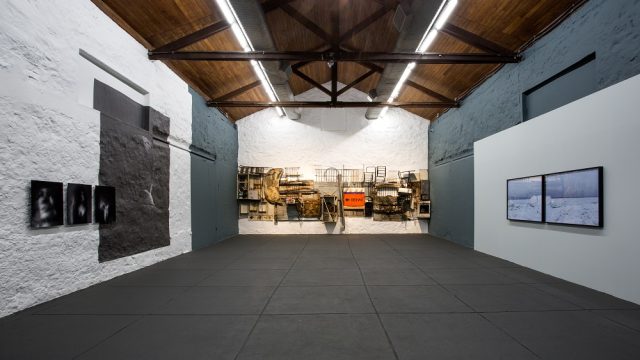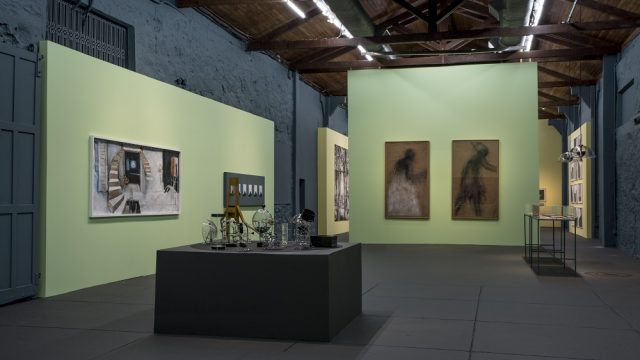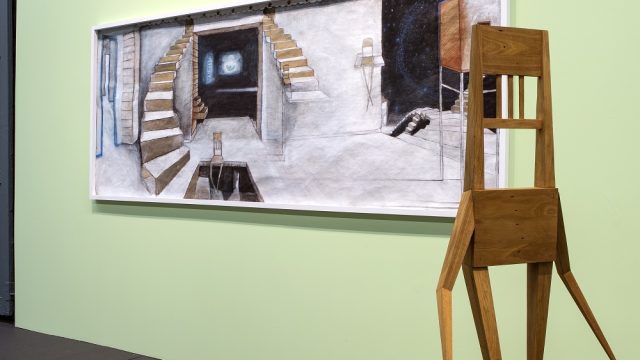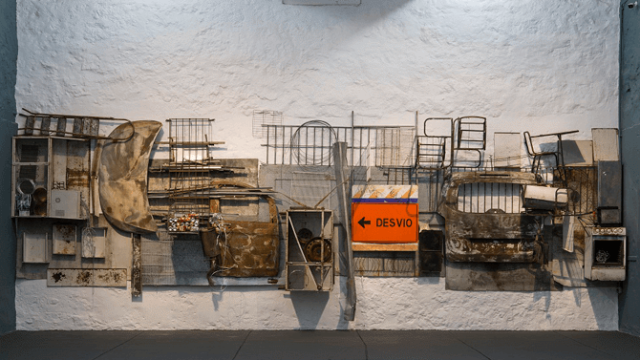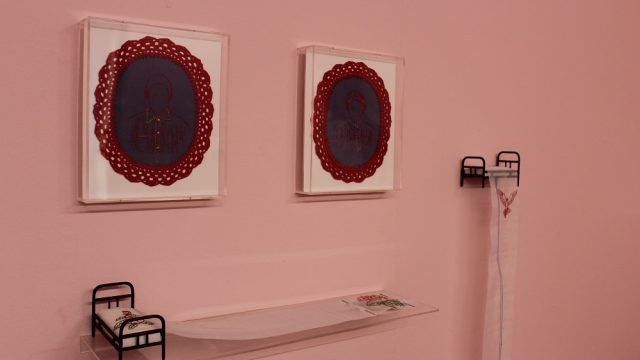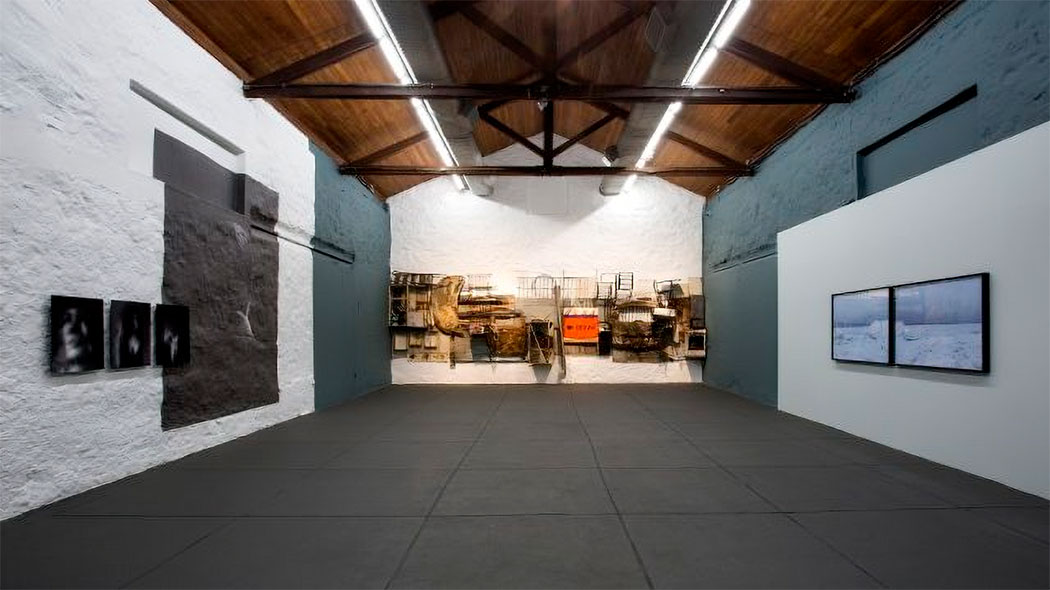
When we began organizing this exhibition, we decided to spend five months, from March to July 2018, seeking to understand how the practices and poetics of artists can evoke new ways of creating and thinking about art, what meanings they construct, and what narratives are explicit. The result was a mapping of about 50 portfolios from works of artists born and/or residing in various regions of the state of Espírito Santo (ES).
In this process, we chose to present 20 artists, a commemorative reference to the 20 years of the Museu Vale.
Eighteen artists from the very new generation and two masters, to whom art owes a lot: the self-taught Hélio Coelho and the professor José Carlos Vilar, were selected for the exhibition. Thus, the 20/20 exhibition – 20 years of Vale Museum, 20 artists from Espírito Santo was born.
The exhibition also includes works by Andreia Falqueto, Bruno Zorzal, Elton Pinheiro, Fernando Augusto, Fredone Fone, Gabriel Borem, Jocimar Nalesso, Juliana Pessoa, Leo Benjamim, Luciano Feijão, Luiz Felipe Porto, Miro Soares, Poliana Dalla, Rafael Pagatini, Re Henri, Rick Rodrigues, Sandro Novais, and Thiago Arruda. Similarly, by crossing metropolitan boundaries, it was possible to encompass municipalities from João Neiva, Marechal Floriano, and Afonso Cláudio to the cities of Vitória, Vila Velha, and Serra. Through these connections, important strategies were developed: the curators could move between interviews, visits, and studio visits. We were interested, above all, in observing the paths proposed to discuss contemporary art. At the same time, we avoided proposing a large thematic exhibition in favor of the multiple poetic experiences of the selected artists. The guiding thread to articulate the exhibition space and accommodate the plurality of ideas, practices, and different origins that points towards an interlocution with our times. It reveals that calls for submissions, artist residencies, scholarships, undergraduate courses in visual arts, theoretical master’s and doctorates here in the state and in various Brazilian territories, present a visible renewal that strengthens the production of the newest generations. In this context, the Vale Museum inserts itself as a valuable bridge, connecting our state to Brazil and the world.
We must emphasize that, as a point of knowledge, over these 20 years, the Vale Museum has constituted itself as a platform for the arts and culture, bringing together substantial protagonists of national and international contemporary art through exhibitions, seminars, workshops, placing great importance on education, inclusion, and respect for diversity. Indeed, this is one of the great missions of museums: to learn, educate, and understand, as it is through the confrontation with works of art that creation is announced.
The good contemporary artistic production in the state of ES is an affirmative symptom of this moment and inspires great confidence. The order of the works presented in the 20/20 exhibition does not intend to elaborate a relational inventory but rather seeks connections between them, enhancing and singularizing what is particular to them, what reflects them in their surroundings. Such skewed narratives can be considered as crossings. In this perspective, the modus operandi of Fredone Fone, Rick Rodrigues, Rafael Pagatini and Vilar encompasses both the biographical and the universal; the struggle, the human being in action, the process between art as an experience of everyday life, and the axis in the enjoyment of reflecting on current issues of contemporaneity.
All the singularity of the aesthetic production of Fernando Augusto, Sandro Novais, Thiago Arruda, and Luciano Feijão moves within this thick network—a reading that acts as a digression from urban landscapes and human conditions, on the daily gaze in the impossibility of representing it. At the same time, in the limited space of the support, repeated lines to exhaustion weave inscriptions of time. In contrast, the gouge operates in the dichotomous realization between permanence and existential pain, within a fidelity to the tradition of engraving. It is a look into the internal world that opens and moves through the history marked by the route of the global African diaspora; the territory of recreation and ordering of existence.
In this perspective, the handling of graphite, charcoal, chalk, pencil, pigments in powder, or any type of paint on paper or canvas – employed by Juliana Pessoa, Jocimar Nalesso, Poliana Dalla, Andreia Falqueto, Leo Benjamim and Hélio Coelho – in large and small formats, or the construction of objects and assemblage – by Re Henri and Elton Pinheiro – compel us to see them from a certain “distance”. Whether in vigor or in questioning, new identity possibilities take shape—both by the essence of deities and by dislodged places—of temporality, specific stories, and traditions, in the act of anchoring events; natural, fictional, everyday, or typographed to exhaustion. The social traverses all modes of life and presence between subjects and their everyday production, and it is through it that these circulating elements are captured; giving them new lives and meanings. Each work seeks the universalization of emotion, configures other territories and symbolic geographies, lived in and through the strong connection with silence as a source of memory of affective discourses.
Continuing on the theme, as a passage from one part to another, Luiz Felipe Porto, Bruno Zorzal, Miro Soare, and Gabriel Borem will position us on the border, displacement, place and world; urbanism, consumption, and migration become part of each other, here, all differences and identity distinctions can be translatable. But the fascination with difference, with alterity, between the here and now, the local and the global, proposes the emergence of new articulations. Arjun Appadurai, an Indian anthropologist, warns us that we need to closely examine the relationship between locality and subjectivity and that we should be attentive to the link between the global and the local: “Will one instance be more real than the other? But we know that images are ideas that circulate, even if people do not migrate.” Moreover, art provokes.
Bringing together these works at the Vale Museum in its 20 years is also a celebration of contemporary production in the land of Espírito Santo, which is grounded in the construction of art history. Here is an invitation to various itineraries.
Curated by
Ronaldo Barbosa and Neusa Mendes

Fale conosco
Redes sociais

